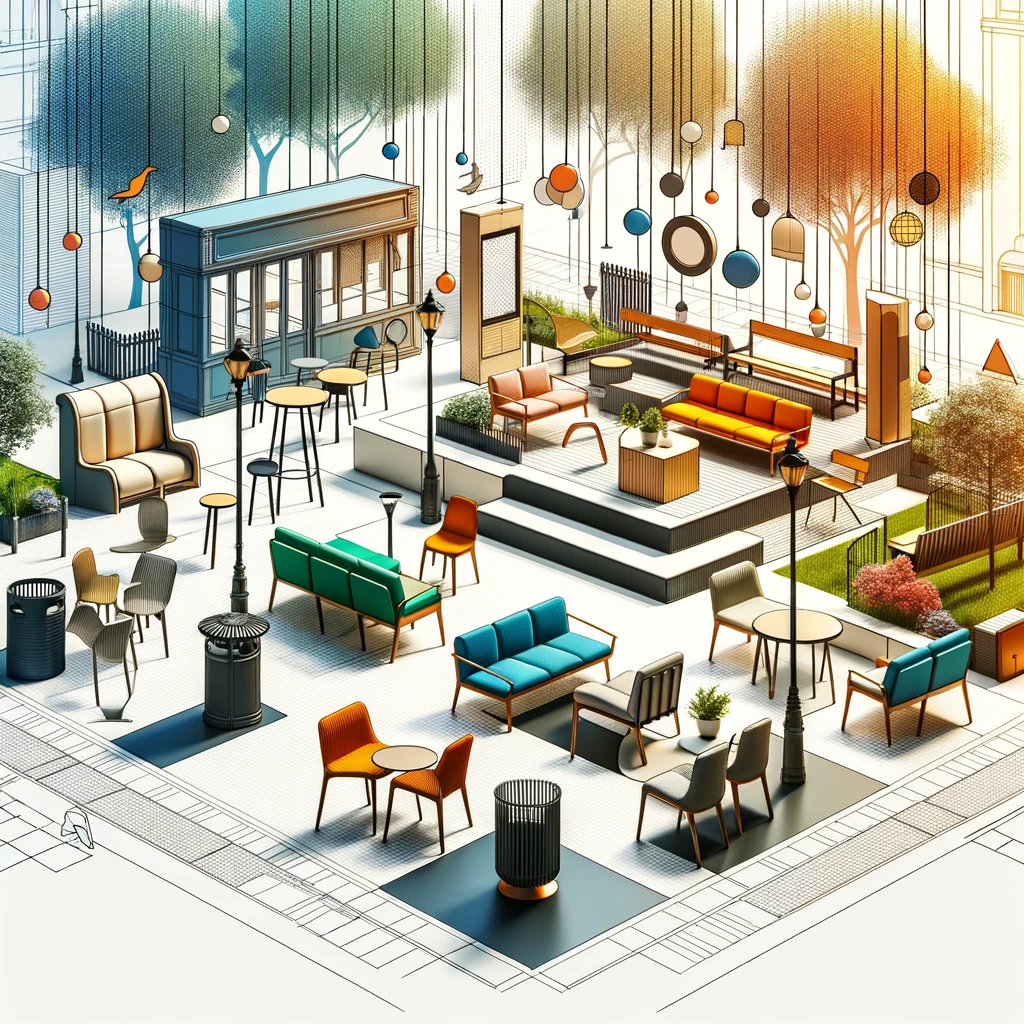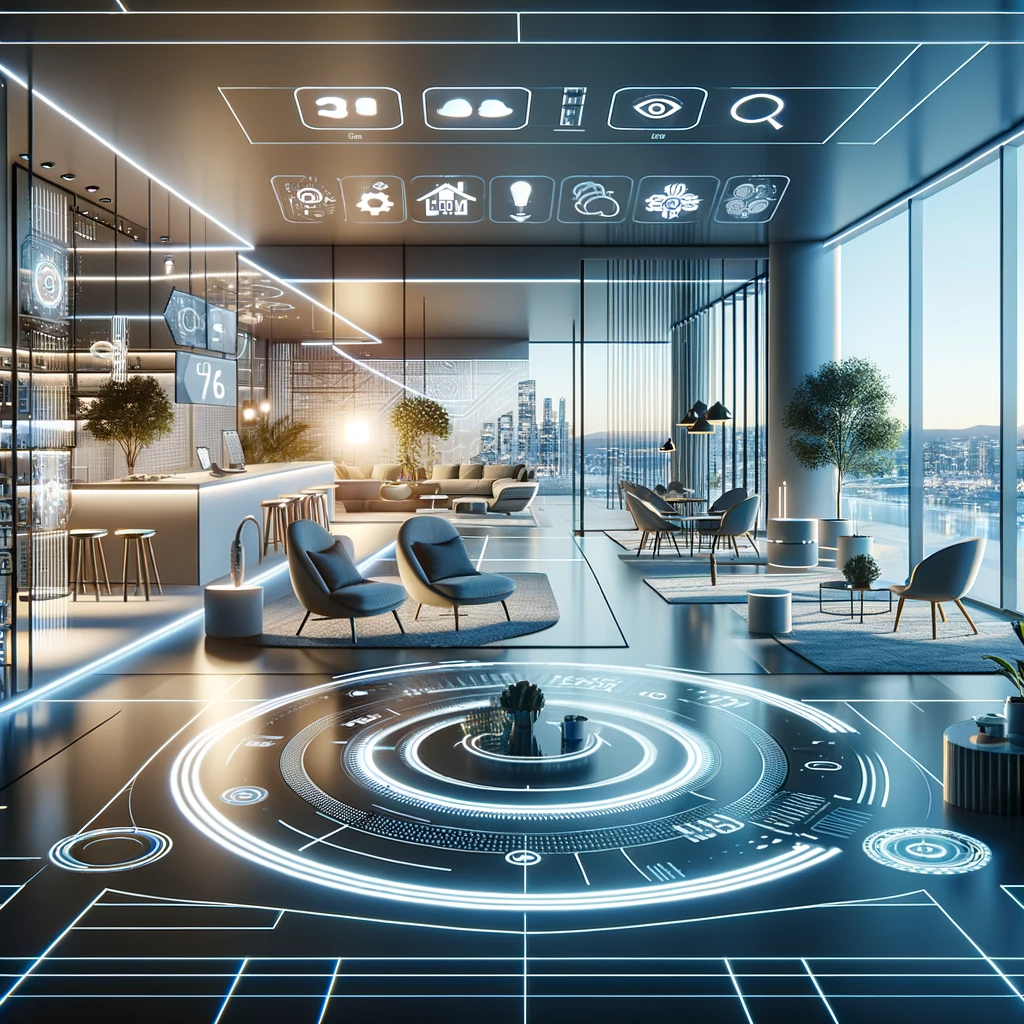Oct. 27, 2023
tags : categories: Interior Rendering , Architects , AI
Interior design, the art of enhancing the functionality, aesthetics, and atmosphere of interior spaces, has undergone a significant transformation in recent years thanks to the integration of Artificial Intelligence (AI). AI-driven tools are revolutionizing the architectural software used in interior design, particularly in the realms of space planning and furniture selection. This article explores how AI influences architectural software in interior design, reshaping the creative process, and ultimately enhancing the quality of interior spaces.
The Traditional Interior Design Process
Before delving into the role of AI in interior design, it's crucial to understand the traditional interior design process. Historically, interior designers relied on their expertise, creativity, and manual methods for space planning and furniture selection.
Space Planning: Interior designers manually measured and assessed spaces, considering room dimensions, traffic flow, and the client's needs. They would create floor plans and layouts using drafting tools, often relying on their spatial intuition and experience.
Furniture Selection: Selecting furniture involves visiting showrooms, flipping through catalogues, and physically inspecting furniture pieces. Interior designers would curate collections of furniture and decor based on their artistic sensibilities and their understanding of the client's preferences.
While these traditional methods are still valuable, they can be time-consuming, subjective, and limited in scope. AI-driven tools address these limitations by introducing automation, data-driven decision-making, and creative assistance to the interior design process.
The Impact of AI on Interior Design Software
AI influences architectural software in interior design in several significant ways, offering new possibilities and efficiency gains.
Space Planning

- Automated Measurement and Assessment: AI-powered tools can automate measuring and assessing interior spaces. By processing 3D scans or floor plans, AI algorithms can accurately calculate room dimensions and analyze spatial relationships.
- Generative Space Planning: AI-driven generative design algorithms can propose multiple layout options based on input parameters and constraints. Designers can explore a range of spatial configurations quickly, optimizing room layouts for functionality and aesthetics.
- Traffic Flow Analysis: AI can simulate traffic flow within interior spaces. Designers can assess how people will move through a space, optimizing layouts for efficiency and safety.
- Client Preferences Analysis: AI can analyze client preferences and requirements, helping designers tailor space planning solutions that align with the client's vision.
Furniture Selection

- AI-Enhanced Catalogs: AI can enhance furniture catalogues by providing detailed information, 3D models, and even augmented reality (AR) experiences. Designers can explore a broader range of furniture options virtually.
- Style and Aesthetic Matching: AI algorithms can analyze a client's style preferences and suggest furniture pieces that align with those preferences. This personalized approach streamlines the furniture selection process.
- Material and Colour Coordination: AI can help coordinate furniture materials and colour schemes within a space, ensuring harmonious interior designs.
- Sustainability Considerations: AI-driven tools can recommend sustainable and eco-friendly furniture options, aligning with the growing emphasis on environmentally responsible design.
- Budget Optimization: AI can help designers make cost-effective furniture selections by providing price comparisons, budget tracking, and cost analysis.
Real-World Examples of AI-Driven Interior Design Tools
Several real-world examples illustrate the transformative power of AI-driven tools in interior design software.
-
Morpholio Board
Morpholio Board is a revolutionary AI application tailored for designers and creatives, offering an innovative way to recognize, tag, and organize furniture and decor items from photographs. This cutting-edge tool not only enhances the design process by allowing users to easily catalog real-world items they find inspiring but also streamlines their workflow through efficient organization features. The AI capabilities facilitate the identification of various design elements, making it simpler for designers to incorporate them into their projects. While it excels in utility and user-friendliness, Morpholio Board may encounter challenges in accurately recognizing items that are highly unique or custom, which could limit its effectiveness in certain niche applications. Nonetheless, its contribution to enhancing productivity and creativity in design work is undeniable, making it a valuable asset for professionals in the field.
-
Planner 5D
Planner 5D stands out as a dynamic interior design tool that integrates AI to revolutionize space planning and design visualization. With its user-friendly interface, users can effortlessly create detailed floor plans and explore various room layouts, furniture arrangements, and decor options. The AI-enhanced visualization feature allows for a quick and efficient exploration of different design possibilities, enabling both amateurs and professionals to experiment with and refine their ideas. Despite its extensive library and versatile functionality, Planner 5D might fall short in projects requiring intricate detail or highly specific design needs. However, its ability to democratize interior design through intuitive technology and AI support makes it an indispensable tool for anyone looking to bring their space to life with ease and creativity.
-
Modsy
Modsy is an innovative platform that merges AI with virtual reality to offer personalized interior design solutions. By allowing users to upload photos of their space, Modsy utilizes AI to generate realistic 3D renderings, offering a virtual glimpse into the potential of their interiors. This unique approach not only helps in visualizing proposed designs but also facilitates the selection of furniture and decor, tailored to fit the user's personal style and space. The realistic renderings and personalized recommendations significantly enhance the decision-making process, although the cost may be higher compared to traditional do-it-yourself design tools. Modsy's use of technology to bridge the gap between imagination and reality makes it a pioneering service in the interior design industry.
-
Havenly
Havenly offers a distinctive online interior design service that leverages AI to expertly match clients with professional interior designers. By analyzing client preferences and styles through sophisticated AI algorithms, Havenly ensures a personalized match with designers who can best bring their vision to life. This tailored approach extends to the design process itself, where clients receive individualized advice and designs, making the journey to their dream space both collaborative and customized. Despite its many benefits, the success of the final design heavily relies on the quality of communication between the client and their designer. Havenly's innovative use of AI to enhance the interior design experience offers a modern, accessible path to professional design services, tailored to meet diverse styles and budgets.
-
Furnishr
Furnishr stands as a comprehensive solution for room design, utilizing AI to tailor furniture and decor selections to user preferences. This platform simplifies the design process from conception to installation, offering a seamless service that handles everything from selecting the perfect pieces to managing logistics and setting up the space. Furnishr's AI-driven approach not only streamlines the decision-making process but also ensures a cohesive and stylish room design that reflects the user's personal taste and requirements. While the service provides convenience and efficiency, the selection may be confined to the platform's inventory, which could impact the uniqueness of the design. Despite this, Furnishr's end-to-end service model presents a hassle-free option for those looking to furnish their spaces with ease and style.
The Benefits of AI-Driven Interior Design Software
Integrating AI into architectural software for interior design offers many benefits:
Efficiency
AI-driven tools automate tasks such as measurement, assessment, and catalogue browsing, saving designers time and allowing them to focus on creative aspects of the design process.
Creativity
AI-powered generative design inspires creativity by proposing design alternatives that designers might not have considered. Designers can explore a wider range of possibilities and experiment with unconventional layouts and furniture arrangements.
Personalization
AI helps tailor interior designs to individual client preferences. It considers factors such as style, colour, and budget, resulting in more personalized and client-centric designs.
Sustainability
AI can help select sustainable and eco-friendly materials and furniture options, aligning with the growing demand for environmentally responsible design solutions.
Cost Control
AI provides budget optimization tools that help designers make cost-effective furniture selections and manage project expenses more efficiently.
Visualization
AI-driven 3D rendering and augmented reality tools enhance visualization, allowing designers and clients to see how designs will look in real-life settings before implementation.
Data-Driven Decision-Making
AI-driven software gives designers data-driven insights into design choices, helping them make informed decisions about layouts, furniture selections, and materials.
Ethical Considerations in AI-Driven Interior Design
As with any field that integrates AI, we must address the ethical considerations in AI-driven interior design. Some of the key ethical considerations include:
Bias and Fairness
AI algorithms may unintentionally perpetuate biases present in their training data. Designers and software developers must ensure that AI recommendations do not discriminate against certain demographics or perpetuate stereotypes.
Privacy
Using AI may involve collecting and analyzing personal data, such as client preferences and design choices. Protecting client privacy and data security is paramount.
Transparency
Designers should be transparent with clients about using AI in their design process. Clients should understand how AI enhances their interior design experience.
Ethical Sourcing
Designers should ensure that their AI recommendations are ethically sourced and produced, considering factors such as labour practices and environmental impact.
The Future of Interior Design: A Collaborative Partnership with AI

AI is not replacing interior designers but becoming their creative assistant and a valuable resource. The future of interior design is likely to involve a collaborative partnership between designers and AI-driven tools. Designers will leverage AI to streamline tasks, generate design ideas, and make data-driven decisions while bringing their unique creativity, human touch, and cultural sensitivity to the process.
As AI technology advances, the possibilities for interior design will expand. AI-driven software will become more sophisticated, offering more personalized, efficient, and sustainable design solutions. Interior designers who embrace AI as a creative assistant will be well-positioned to provide clients with exceptional interior spaces that blend the best of human ingenuity and artificial intelligence. The transformation of architectural software in interior design is just the beginning of an exciting journey toward more innovative and customized living environments.










